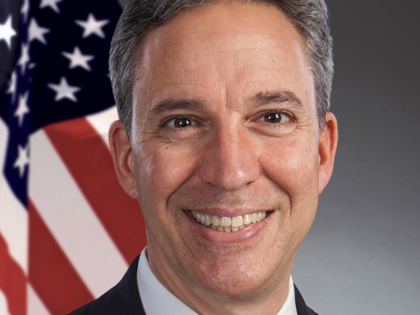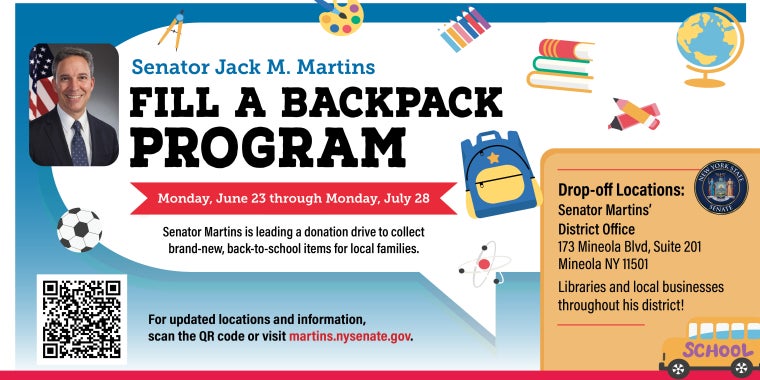
From the Desk of Senator Jack M. Martins
October 4, 2016
-
ISSUE:
- Heroin and Opioid Abuse
Open the book of bad ideas because we’ve got another one from New York City Mayor Bill de Blasio. This week he and the City Council allocated $100,000 in taxpayer funds to explore opening a supervised injection facility for heroin addicts, essentially creating a government-run “shooting gallery.” In 2015, New York City witnessed 937 overdose deaths, a 66% increase, so the mayor thinks letting addicts get high under medical supervision will eventually reduce that number.
Readers of this column know that I’ve worked hard these last six years on the issue of substance abuse, so it’s especially exasperating to have to debunk ill-conceived plans like this one. For starters, this methodology is commonly known as harm-minimization or a “they’re doing it anyhow so make it safer” approach. That’s in sharp contrast to traditional harm-elimination strategies that try to eradicate problems, in this case with prevention and recovery services. Currently, top advocates in the field tell me their organizations are reeling from funding cuts nationwide. So I ask you plainly: how is it possible that the city can find money for people to shoot up but not to fund treatment? It’s also understood that addicts have to hit rock bottom before deciding to quit. If their intervention makes it easier for addicts to avoid that realization, leaving them hooked with lives still in shambles, the city has actually contributed to the epidemic.
Then there’s the brutal reality that these "crusaders" don’t want you to know: there is no “safe” way to inject heroin. It is inherently unstable and dangerous and a person can just as easily overdose at one of these facilities as they could in an alley. That would ultimately make government complicit in the untimely death of its own citizens. In public service, the safety and health of our constituents is our primary mission. Assisting people as they go about life-threatening and illegal activity is not the work of government. Instead, the city should be marshaling society’s resources and offering effective treatment and rehabilitation. Besides, the plan runs afoul of federal laws as well. Title 21 of the Controlled Substances Act makes it clear that “maintaining drug-involved premises” is considered “unlawful.”
Sadly, I’ve seen firsthand what heroin is doing to our Long Island families and neighborhoods. I can tell you that I’ve never heard a victim or family member say they wish there had been an injection facility nearby. The opposite is true. They want real help kicking the habit. They want professionals at medically monitored withdrawal centers who can get their sons, daughters, siblings and friends off drugs. That means funding for prevention programs and recovery services. That’s what works and that’s common sense. Normalizing dangerous behavior doesn’t make it less dangerous, it just lulls people into a false sense of security. For those battling heroin addiction - that means death.
In the Senate, we've held hearings throughout the State and heard testimony from experts, recovering addicts, and families. Using their testimony, we've passed laws that address the need for education, treatment, and rehabilitation. We've put resources in place to expand access to in-patient treatment centers and made sure that health insurers didn't leave families holding the bag. While focusing on rehabilitation and treatment for addicts, we passed legislation increasing criminal penalties for dealers who push this poison to our kids.
I can’t stand the idea of another wasted life or another home full of heartache. Having government sanctioned drug abuse does nothing to prevent either. We simply cannot cave in to problems, no matter how complex or frightening. We have to fight them. If that means a long tedious haul, case by case, person by person, then that’s our charge. Maybe I’ve watched too many Jimmy Stewart movies, but I still believe government should be an agent of hope when all else fails. I’ll keep fighting the good fight and I hope you’ll be there with me.
Share this Article or Press Release
Newsroom
Go to NewsroomSenator Martins' Toy Drive 2025
November 10, 2025

Fill a Backpack Program
June 10, 2025


